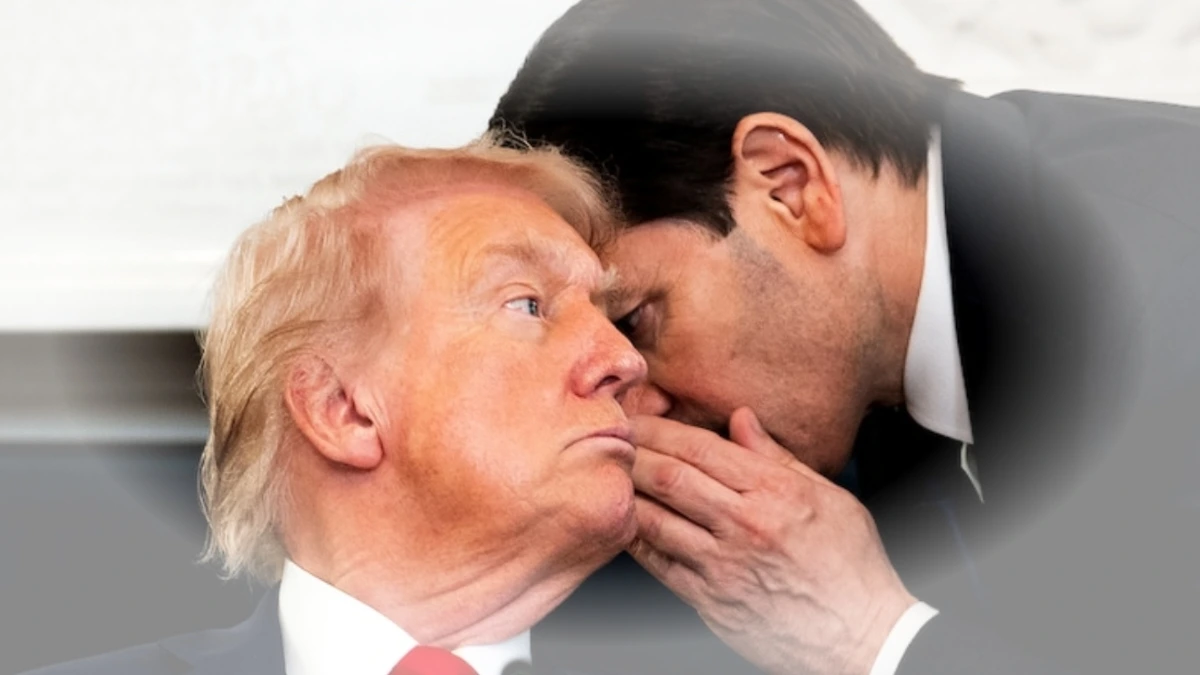JERUSALEM — Former US President Donald Trump departed Sunday for Israel and Egypt to mark a newly brokered ceasefire between Israel and Hamas, a deal his administration helped negotiate to end nearly two years of conflict.
The visit comes as both sides begin implementing the first phase of the Trump mediated agreement aimed at a permanent truce and renewed regional stability.
Trump’s visit is expected to include meetings with Israeli and Arab leaders, stops in Jerusalem and Sharm el-Sheikh, and a summit focused on rebuilding Gaza.
“I think you are going to have tremendous success and Gaza is going to be rebuilt,” Trump said Friday, adding that wealthy Arab nations could play a major role in reconstruction.
The ceasefire marks a turning point following the October 7, 2023, Hamas led attack on Israel that triggered a devastating military campaign.
Under the first stage of the deal, Hamas will release 48 hostages, including about 20 believed to be alive, while Israel will free hundreds of Palestinian prisoners and withdraw troops from major urban centers in Gaza.
Israeli forces began partial withdrawals Friday, activating a 72 hour countdown for the hostages’ release. Trump is expected to arrive in Israel as those releases take place, and his team has confirmed plans to meet freed captives and their families.
Vice President JD Vance told CBS’ “Face the Nation” that Trump “is traveling to the Middle East likely this evening in order to meet them and greet them in person.”
Following Israel, Trump will travel to Egypt to co-host a regional summit with Egyptian President Abdel Fattah el Sissi. Leaders from more than 20 countries are expected to attend to discuss Gaza’s reconstruction and the next phase of peace efforts.
Analysts warn that the truce remains fragile. Key questions about Gaza’s postwar governance, reconstruction oversight, and the disarmament of Hamas remain unresolved. Israel has hinted that it may resume military operations if its conditions are not met.
“I think the chances of Hamas disarming themselves are close to zero,” said H.R McMaster, Trump’s former national security adviser. “What will likely happen is that the Israeli military is going to have to ensure Hamas cannot reconstitute itself.”
Some Middle East scholars say Trump’s diplomatic push mirrors his earlier Abraham Accords initiative, which normalized relations between Israel and several Arab states.
Trump is trying to pick up where he left off using economic and security incentives to build regional stability, said Dr. Laila Haddad, a political analyst at the Doha Institute for Middle East Studies.
“But this time, the challenge is far greater because of the war’s humanitarian toll and political divisions on all sides.”
The Gaza conflict has displaced over 1.8 million residents, according to the United Nations, leaving much of the territory in ruins. Reconstruction is expected to take years and cost tens of billions of dollars.
Under the Trump brokered deal, Israel agreed to reopen five border crossings to allow increased humanitarian aid. The US will establish a civil military coordination center in Israel to help manage logistics, security, and the flow of supplies. Adm.
Brad Cooper, head of US Central Command’s regional operations, said about 200 American troops would assist in monitoring the truce, though none would enter Gaza.
“This is a monumental logistical challenge,” said Rafi Cohen, an Israeli defense analyst in Tel Aviv. Ensuring aid reaches civilians without empowering militant networks will be key to sustaining peace.
In Jerusalem, reactions to Trump’s visit were mixed. “If Trump can bring back our sons and daughters, we’ll be grateful forever,” said Yael Ben Ami, whose brother remains among the hostages. “But we’ve heard promises before.”
In Gaza City, where rubble still lines the streets, residents expressed cautious hope. “We are tired of war,” said Mahmoud al-Khatib, a shopkeeper who returned to his destroyed storefront last week.
“If this deal means my children can sleep without bombs, I welcome it but I don’t trust any leader until we see results.” In Cairo, political observers noted Egypt’s pivotal role in mediating between Israel and Hamas.
“Egypt wants stability on its border and to assert itself as the regional peace broker,” said political columnist Salma El Sayed. “Hosting Trump gives Cairo renewed diplomatic relevance.”
The Trump administration has signaled it intends to build on the Abraham Accords by pursuing normalization with Saudi Arabia and Indonesia, the world’s largest Muslim-majority nation.
Officials believe a durable Gaza settlement could open the door to broader Arab Israeli engagement. “A deal with Saudi Arabia would be transformative,” said a senior Trump administration official who briefed reporters on condition of anonymity.
“It would redefine Israel’s place in the region and create economic opportunities across the Middle East.” Still, Riyadh has maintained that it will not formally recognize Israel until a Palestinian state is established.
The path to peace must include justice for Palestinians, a Saudi Foreign Ministry spokesperson said Saturday in a written statement.
Trump’s Middle East trip comes at a delicate moment with hostages yet to be released, Gaza in ruins, and questions lingering over what peace will look like. The ceasefire, though fragile, has provided a brief pause after years of bloodshed and isolation.
Whether this marks the start of a new chapter or a temporary lull will depend on the willingness of all parties to seize what Trump has called “a narrow window for peace.”

